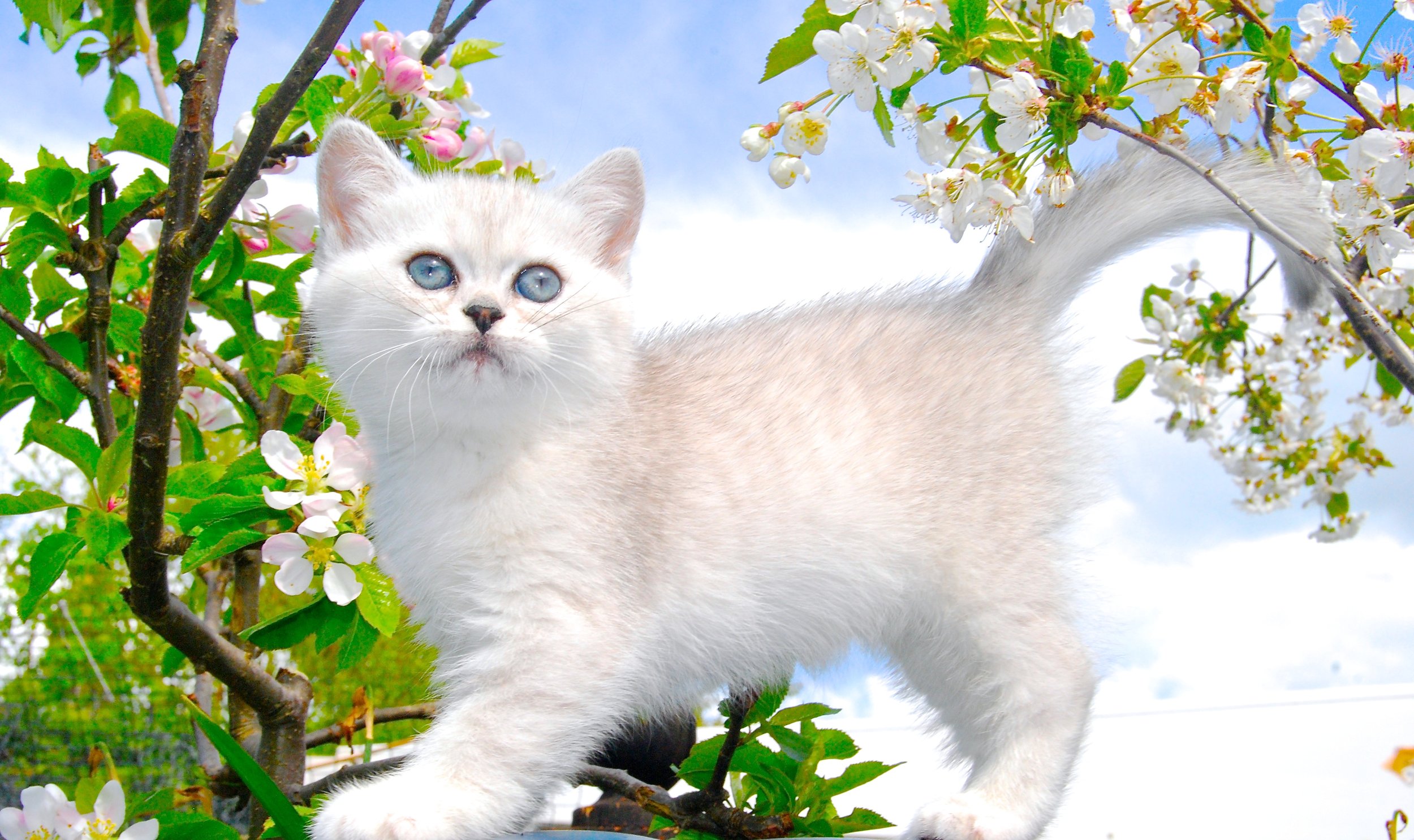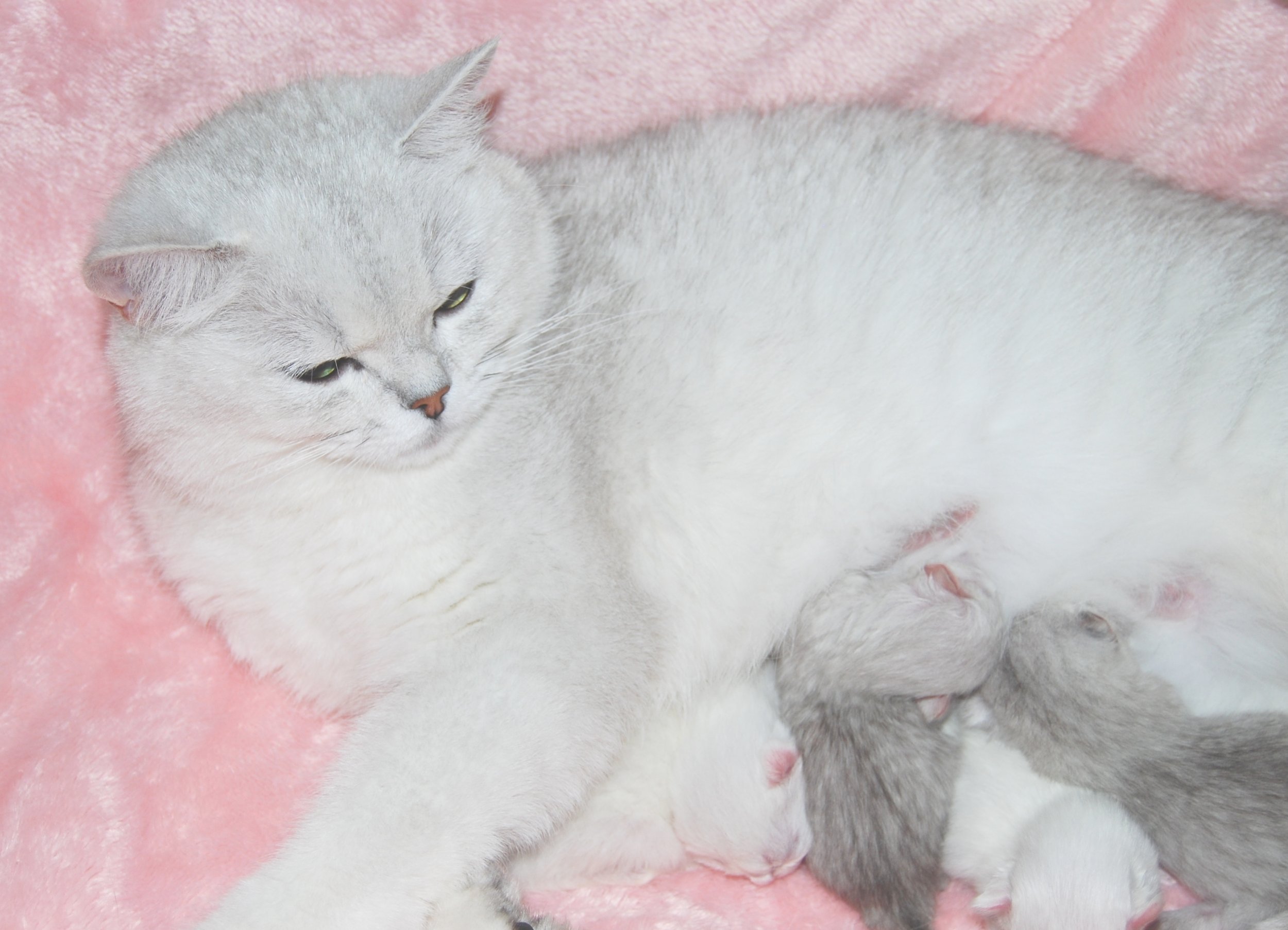Does a Leopard Change Its Spots?
Or, why silver kittens lose their spots and goldens don’t!
Does a Leopard change its spots?
Actually, they can - how and when our silver spotted kittens change and lose their spots is down to cat coat genetics.
I am often asked how these amazing colours are created in the British Exotic, Short and Longhair cats. The complexity of shading in kittens bemuses new owners when their silver kitten is born dark black or has spotted markings on its fur and how that kitten will turn into a Silver Chinchilla kitten and why their Golden litter siblings retain their spots.
In the Silver kittens, a noticeable change begins around 3 months until the full adult coat comes through. Why this occurs is detailed below.
SHADING
In the Silver & Golden Cats, the 'type' is characterised by colour at the tips of the hair. There are three types which include chinchilla, shaded and smoke, each distinguished by the extent of the shading on individual hairs.
Silver Shaded and tipped (shell/chinchilla) are due to the dominant Inhibitor gene (silver) + presence of Wide Band + the Ticked Tabby pattern. Golden is the effect of only wide-band.
Silver kittens born without the Ticked Tabby gene are born dark silver and can look dark grey, those with Ticked Tabby or Spotted gene are born lighter with the tipping only on the tabby or spotted markings. Also described as ghost markings, as the kitten grows, these markings become uniform and kittens will grow up to have the dark tipping only on the tips of the fur. While as adults they might look very white from afar, up close you can clearly see the tipping and when the fur is parted it looks white. Which is the dominant inhibitor gene (silver).
TIPPING COLOUR
The colour of the tipping is determined by the colour of the kitten Black Silver, Blue Silver, Chocolate Silver, Lilac Silver, Red Silver, Cinnamon Silver.
SILVER
Silver colouring is caused by the action of a dominant gene known as the Melanin Inhibitor (I) (I,i) whose presence prevents the full development of pigmentation in the hair. Silver Inhibitor appears to reduce or eliminate the production of pheomelanin or yellow pigment in the cat’s hair. Generally considered a dominant trait, one copy can cause the loss of pigment, but likely a cat with two copies of the mutation (I,i) may have less “ruffusing” or “tarnishing” as well. Therefore kittens with one parent that is Golden and the other silver will only inherit one gene Melanin Inhibitor (I).
The Silver cat also has a mutation at the gene called Ticked which removes the tabby patterns (Tabby Aby, Ta). This is why Silver Spotted Kittens turn into Silver Shaded Chinchilla and lose their spots. Whereas a Golden Spotted will retain its spots.
GOLDEN
In golden cats, the dominant Melanin Inhibitor (I) is absent, Golden (ii) = non-silver.
In the ticked tabby cats without silver, Wide Band restricts the pigment to the end of the hair leaving a pale golden band between the skin and the pigment. The wider the band, the paler the golden colour is and reflects the "Apricot" or otherwise known Tipped "Copper" tones. All Tipped "Copper" cats (in EMS terms ny12) can result from Ticked, Shaded, Chinchilla and Tipped "Copper" recessive lines.
BLACK
In the Black (B) series, the locus stands for ”black” since the dominant gene of the locus is expressed in the black coat colour (which is a very dark brown). Genes of the B locus influence the expression of only eumelanin. Two mutations of the B gene have been identified, b (brown or chocolate) and bl (light brown or cinnamon). The chocolate (b) allele is dominant over the cinnamon (bl) allele. Since the B gene is dominant over the locus, cats heterozygous for it (Bb or Bbl genotype), carry chocolate or cinnamon gene but it cannot be recognized based on phenotype.
The hierarchical order: B (Black) > b (Chocolate) = bl (Cinnamon)
More information on Cat Coat Genetics














